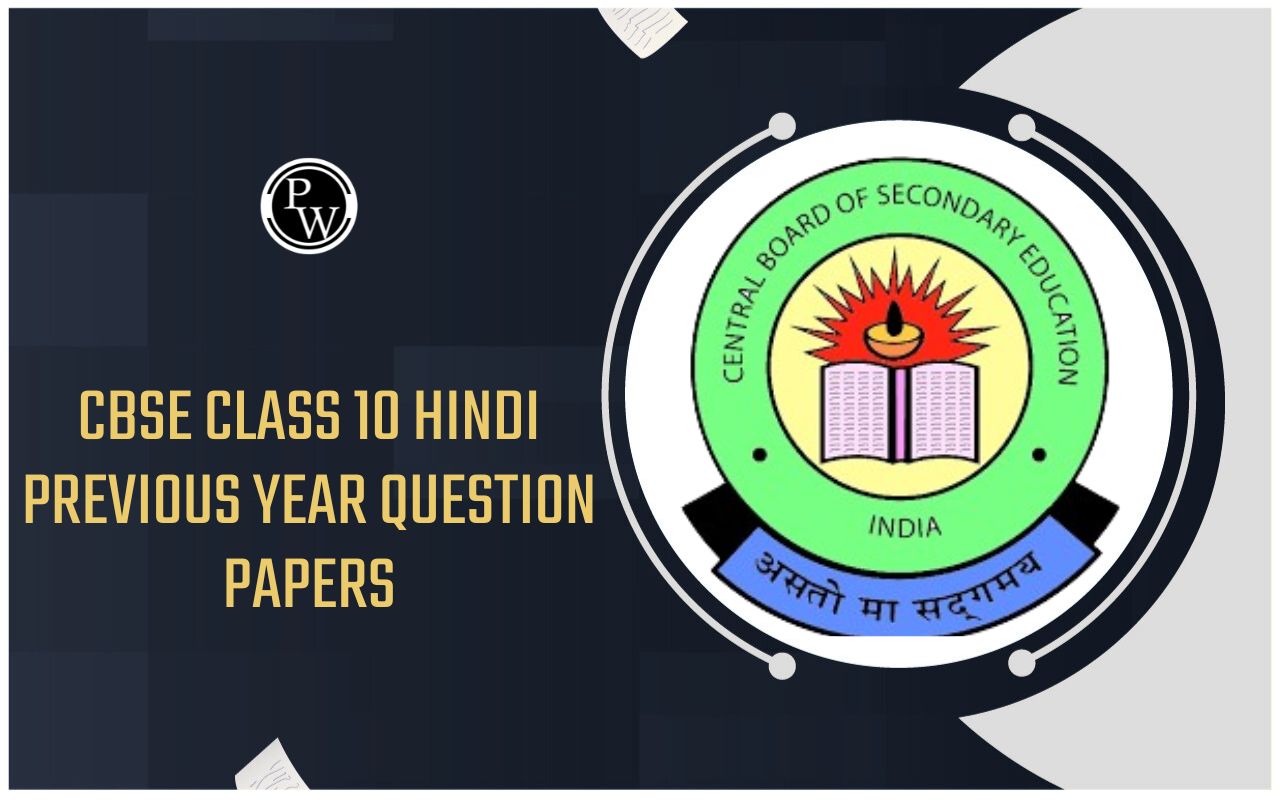
CBSE Class 10 Maths Weightage 2024-25: The CBSE has released the official syllabus for the 2023-24 academic year, including a unit-wise distribution of marks. Students can find the syllabus on the CBSE’s official website. While the unit-wise weightage is official, the chapter-wise weightage provided here is based on an analysis of past question papers and isn’t officially released by CBSE.
Pariksha Pe Charcha 2025 Online Registration Open
Understanding weightage of maths class 10 chapter wise helps students focus on high-priority topics during preparation and manage their revision time effectively to score better.CBSE Class 10 Maths Weightage 2024-25 Overview
CBSE Class 10 Maths Weightage 2024-25 provides a detailed breakdown of marks across different units, helping students to plan their preparation efficiently. Here is an overview of the maths weightage class 10 for both theory and internal assessments.| Aspect | Details |
|---|---|
| Exam Conducting Body | Central Board of Secondary Education (CBSE) |
| Exam Name | CBSE Class 10 Mathematics Exam 2024-25 |
| Category | Weightage Distribution |
| Total Marks | 100 Marks |
| Theory Marks | 80 Marks |
| Internal Assessment Marks | 20 Marks |
| Unit 1: Number Systems | 5 Marks |
| Unit 2: Algebra | 21 Marks |
| Unit 3: Coordinate Geometry | 6 Marks |
| Unit 4: Trigonometry | 12 Marks |
| Unit 5: Geometry | 15 Marks |
| Unit 6: Mensuration | 10 Marks |
| Unit 7: Statistics | 11 Marks |
| Pen-Paper Test Weightage | 5 Marks |
| Multiple Assessment Weightage | 5 Marks |
| Portfolio Weightage | 5 Marks |
| Lab Practical Weightage | 5 Marks |
| Remembering and Understanding | 43 Marks (54%) |
| Applying | 19 Marks (24%) |
| Analyzing, Creating, and Evaluating | 18 Marks (22%) |
Weightage Distribution for CBSE Class 10 Maths 2024-25
The total marks for the CBSE Class 10 Mathematics exam are 100, split into two main components: 80 marks for the theory paper and 20 marks for internal assessments. Understanding the weightage of each unit and chapter helps students allocate their time wisely.CBSE Class 10 Mathematics Unit-Wise Weightage 2024
The CBSE Class 10 Mathematics exam is divided into various units, each with its own weightage. Below is the unit-wise weightage for the 2024 examination:| Unit Number | Unit Name | Weightage (Marks) |
|---|---|---|
| Unit 1 | Number Systems | 5 Marks |
| Unit 2 | Algebra | 21 Marks |
| Unit 3 | Coordinate Geometry | 6 Marks |
| Unit 4 | Trigonometry | 12 Marks |
| Unit 5 | Geometry | 15 Marks |
| Unit 6 | Mensuration | 10 Marks |
| Unit 7 | Statistics | 11 Marks |
| Total | 80 Marks |
CBSE Class 10 Mathematics Chapter-Wise Weightage for 2024
Here is the CBSE Class 10 Mathematics Chapter-Wise Weightage for 2024. This distribution helps students focus on important chapters to maximize their exam score.| Unit | Chapter Name | Expected Weightage |
|---|---|---|
| Unit 2: Algebra | Polynomials | 4 Marks |
| Linear Equations in Two Variables | 6 Marks | |
| Quadratic Equation | 6 Marks | |
| Arithmetic Progression | 6 Marks | |
| Unit 4: Trigonometry | Introduction to Trigonometry | 7 Marks |
| Application of Trigonometry | 5 Marks | |
| Unit 5: Geometry | Triangles | 8 Marks |
| Circles | 7 Marks | |
| Unit 6: Mensuration | Areas Related to Circles | 4 Marks |
| Surface Areas and Volumes | 6 Marks | |
| Unit 7: Statistics | Statistics | 9 Marks |
| Probability | 2 Marks |
CBSE Class 10 Mathematics 2024: Weightage for Internal Assessment
In addition to the theory exam, CBSE evaluates students through internal assessments, which contribute 20 marks to the total score. These assessments ensure that students are continuously assessed throughout the academic year, beyond just the final exam. The internal assessment includes the following components:| Internal Assessment Component | Weightage (Marks) |
|---|---|
| Pen-Paper Test | 5 Marks |
| Multiple Assessment | 5 Marks |
| Portfolio | 5 Marks |
| Lab Practical (from prescribed books) | 5 Marks |
CBSE Class 10 Mathematics 2024: Typology of Questions Candidates
The weightage distribution of questions is categorized based on their objectives. This helps candidates understand the focus areas of the exam.| Type of Question | Weightage Distribution (Marks) | Weightage Distribution (Percentage) |
|---|---|---|
| Remembering and Understanding | 43 Marks | 54% |
| Applying | 19 Marks | 24% |
| Analysing, Creating, and Evaluating | 18 Marks | 22% |
Preparation Tips for CBSE Class 10 Maths
Focus on High Weightage Topics : As seen from the weightage distribution, Algebra, Geometry, and Trigonometry are the high-scoring areas. Prioritize these topics in your study schedule to maximize your marks.
Practice Regularly : Mathematics is a subject that requires constant practice. Solve previous years question papers and sample papers to get familiar with the exam pattern and types of questions asked.
Time Management : Divide your time between studying theory and solving problems. Allocate more time to challenging topics and revise regularly.
Internal Assessment : Don't neglect the internal assessments. These contribute to 20 marks, which can significantly improve your overall score. Regularly participate in assessments and practicals.
Clarify Doubts : If you find any concept difficult, don't hesitate to seek help. Ask your teachers, friends, or refer to online resources to clear your doubts.
CBSE Class 10 Maths Weightage 2024-25 FAQs
What is the total weightage for the CBSE Class 10 Mathematics exam in 2024-25?
How should I prioritize my study for the CBSE Class 10 Maths exam?
Is there any way to predict which chapters will be most important in the exam?
How can I improve my performance in Trigonometry?
What type of questions can I expect in the exam?










